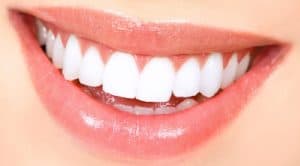When looking through the many options when it comes to dental veneers, we can’t help but find an array of possibilities. The choice can be daunting at first, which is why we have collected information about them for a better understanding in the future.
Whether it is the material used, the benefits they have, the difference in cost, or just general information about the different dental veneers, you will find it here with the aid of Los Algodones dentists.
What do veneers do
Veneers are thin shells, usually made of porcelain. These are attached to the front of your teeth in order to not only give them a better shape, but also to correct, whiten or even repair a small chip.
There are three things in which veneers do an amazing job at. First, they greatly improve the look on a smile, giving it more shine and on a whiter shade. Second, they can fix and repair small cosmetic problems, such as crooked teeth. And third, they also help repairing tooth enamel damage. As you know, a broken tooth enamel part cannot be grown back, so by using veneers, you are not only reinforcing the tooth, but also giving it a good whole look.
Different types of veneers
Now, there are different materials that can be used for making veneers. Just like with braces, there are different pros and cons to each of them.
- Pocerlain veneers. These are made in dental laboratories where they take a dental impression in order to make them as close to the original as possible. As such, they require a bit more work to setup and are more costly. However, they tend to be more resilient in shape and do not stain as easily. They also do not need as much tooth enamel removed in order to fit and look natural.
- Composite resin veneers. These are done at the dental office rather than the laboratory. The dentists themselves shape and give shape to make them match the patient’s smile. In comparison with the porcelain ones, they are cheaper in price and can be applied quickly.
Is it possible to whiten dental veneers?
As you know, veneers can get stained over the years. So, is it possible to whiten them? The answer is somewhere in-between.
A veneer can both darken over long periods of time, but also get surface stains. For the former, it is a sign that it has absorbed dark components through its porous material. For the latter, a dentist can polish the dental veneers to bring remove the stain.
Taking care of dental veneers 
To keep your veneers in great shape, you only have to do so much as you would with natural teeth. Los Algodones dentists recommend following good dental health care, which is daily brushing and flossing habits. As such, these tips will help keeping them clean and healthy in the long run:
- Good dental health habits. As we mentioned briefly, brushing twice a day and flossing once is key to keep them clean. This helps avoiding staining from dark pigments that come from food such as pasta sauces, tea and coffee.
- Drink plenty of water. Water helps not only washing away foreign food particles in the mouth. It also helps increasing saliva flow, which helps keeping bacteria in check.
- Do not use your teeth as tools. This is a really common reason in which people end up with cracks and chips in their veneers.
- Stop teeth grinding in its tracks. If you notice that you engage in this behavior either during the day or as you sleep, make sure to address it. The pressure generated from grinding can result in wearing down and even damaging the lifespan of veneers.
- Protect your teeth if you play sports. You’ll notice how in football and boxing people wear mouth guards to protect their teeth. The same goes for any kind of sport as a bad hit towards to the face and mouth can result in damage for the veneers.
